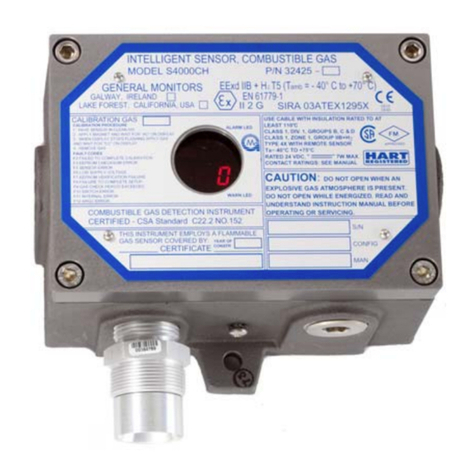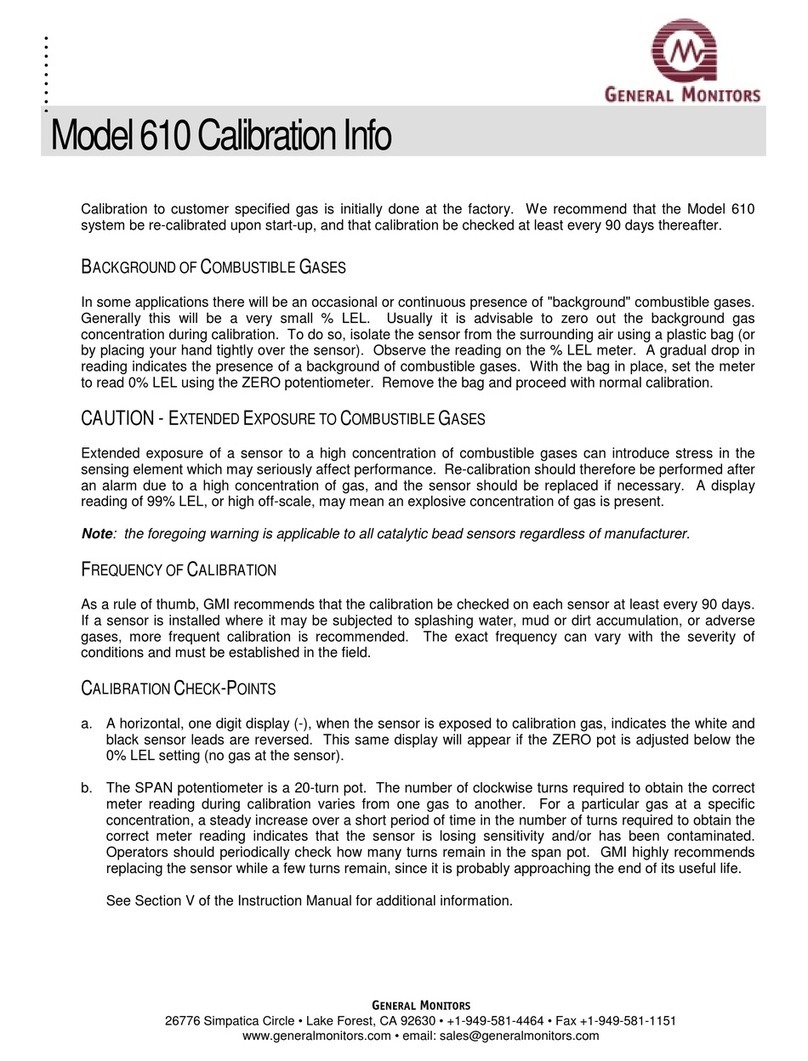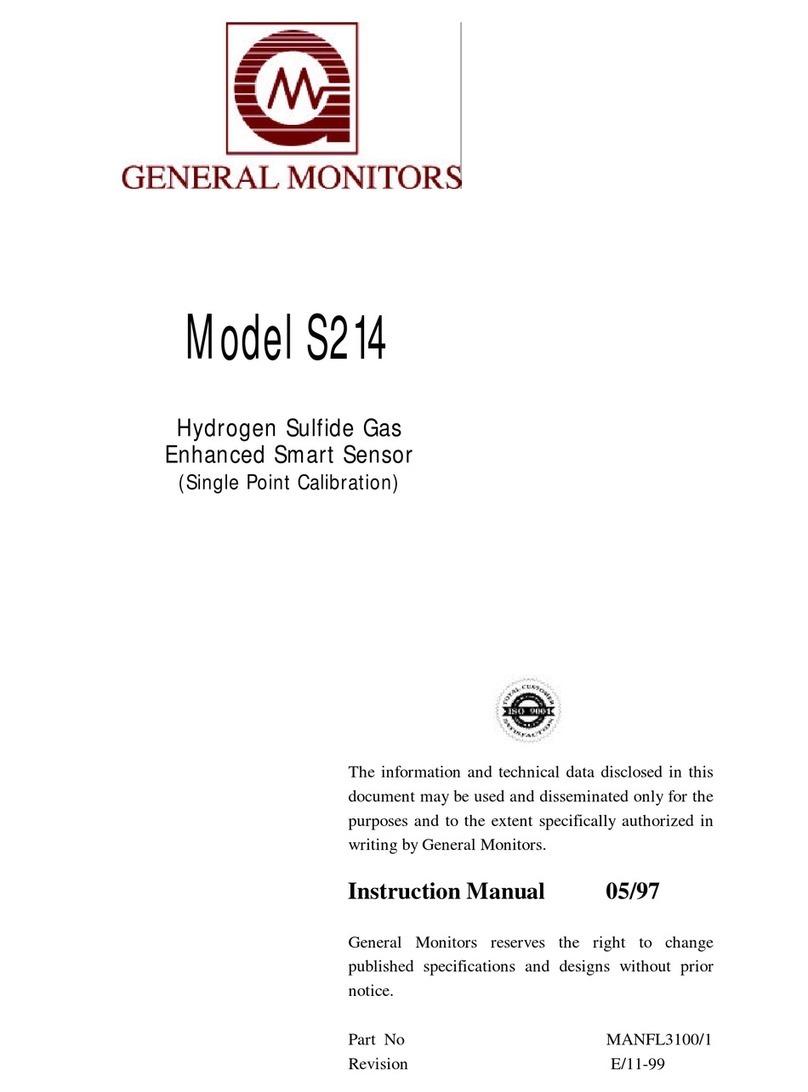
Warranty
General Monitors warrants the Model S104
to be free from defects in workmanship or
material under normal use and service within
two (2) years from the date of shipment. Gen-
eral Monitors will repair or replace without
charge any such defective equipment to be
found defective during the warranty period.
Full determination of the nature of, and re-
sponsibility for, defective or damaged equip-
ment will be made by General Monitors’
personnel. Defective or damaged equipment
must be shipped prepaid to General Monitors’
plant or representative from which shipment
was made. In all cases this warranty is lim-
ited to the cost of the equipment supplied by
General Monitors. The customer will assume
all liability for the misuse of this equipment
by its employees or other personnel.
All warranties are contingent upon proper use
in the application for which the product was
intended and do not cover products which
have been modified or repaired without Gen-
eral Monitors’ approval or which have been
subjected to neglect, accident, improper in-
stallation or application, or on which the
original identification marks have been re-
moved or altered. Except for the express war-
ranty stated above, General Monitors
disclaims all warranties with regard to the
products sold, including all implied warranties
of merchantability and fitness and the express
warranties stated herein are in lieu of all obli-
gations or liabilities on the part of General
Monitors for damages including, but not lim-
ited to, consequential damages arising out
of/or in connection with the use or perform-
ance of the product.
i
Warning
The Model S104 Combustible Gas Enhanced
Smart Sensor Assembly contains components
which can be damaged by static electricity.
Special care must be taken when wiring the
system to ensure that only the connection
points are touched.
GENERAL MONITORS
Model S104




























